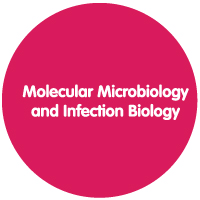 | | Ecology and Evolution of Microbial PopulationsCoordinators
Karina B. Xavier
José Paulo Sampaio Objectives
Emphasize the importance of microbial populations as targets of evolution and capacitate the students to recognize evolutionary processes acting upon microbial populations and communities. Discuss the consequences of this type of selective pressure for the entire biome, including interactions with humans. Students will become familiarized with aspects of microbial domestication, microbial phylogeography and diversity, molecular mechanisms of microbial communication, and the concept of microbial cooperation and its implications to theories of social evolution. Syllabus
An introduction to Microbial Ecology and a critique of the “everything is everywhere but environment selects” model. Man-driven evolution and microbe domestication.
Microbe population and functional genomics, an analysis and discussion of case studies.
Microbe phylogeography at fine and global scales and dispersal patterns.
Molecular mechanisms involved in bacterial sensing and chemical communication.
Microbial group behaviors: cooperation and competition within microbial populations.
The gut microbiota and its interaction with the host – modulation of the immune system; protection to infection and inflammation; influencing animal behavior. Evaluation
There will be 3 afternoons dedicated to the group activities which will feature mainly
presentations and discussions by the student, of the most exciting and up to date research publications related to the topics taught. These presentations will be performed by the student while stimulated and guided by the teachers. Emphasis will be given to discussions of the rationale, limitations, and integration with state of the art of each research article. In the beginning of the week the teachers will provide material on how to achieve proficiency in presentation of scientific work. The students will be evaluated for the quality of their interventions, participation
in the discussions, and their presentations. Main Bibliography - Liti et al. 2009. Population genomics of domestic and wild yeasts. Nature 458: 337- 341.
- Replansky et al. 2008. Saccharomyces sensu stricto as a model system form evolution and ecology. Trends Ecology and Evolution 23:494-501.
- Will et al. 2010. Incipient balancing selection through adaptive loss of aquaporins in natural Saccharomyces cerevisiae populations. PLoS Genetics 6: e1000893.
- Shank EA, Kolter R. 2009. New developments in microbial interspecies signaling. Curr Opin Microbiol. 12:205-14.
- Keller L, Surette MG. 2006. Communication in bacteria: an ecological and evolutionary perspective. Nat Rev Microbiol. 4:249-58.
- Kau et. al. 2011. Human nutrition, the gut microbiome and the immune system. Nature. 474:327-36.
- Littman DR, Pamer EG. 2011. Role of the commensal microbiota in normal and pathogenic host immune responses. Cell Host Microbe. 10:311-23.
|

